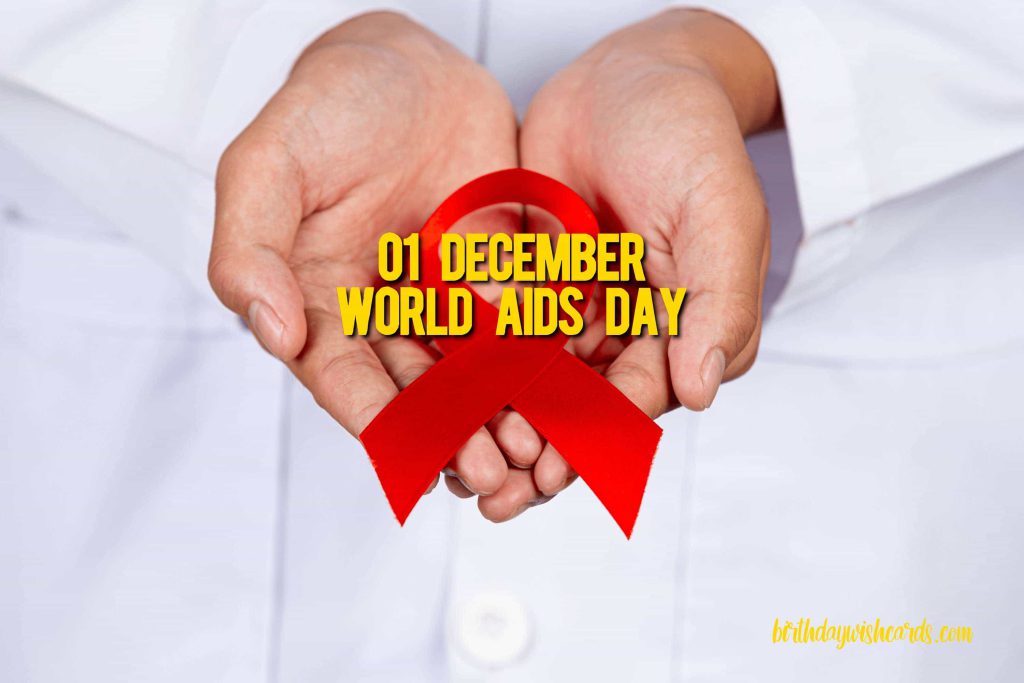
01 December: World AIDS Day – Raising Awareness and Promoting Prevention
Why Was World AIDS Day Established?
World AIDS Day is observed annually on December 1st as a global initiative to unite people in the fight against HIV/AIDS. It provides a vital platform to raise awareness about HIV, show support for those living with the virus, and honor the memory of those who have lost their lives to AIDS-related illnesses. Established in 1988, World AIDS Day was the first international health day dedicated to a single disease, marking a significant milestone in public health history.
James Myhre, an American journalist and HIV educator, played a pivotal role in launching World AIDS Day. The inaugural observance on December 1, 1988, aimed to draw global attention to HIV/AIDS and commemorate those affected by the epidemic. Since then, it has become the world’s longest-running disease awareness campaign, highlighting ongoing challenges and progress in HIV prevention and treatment.
Theme for World AIDS Day 2020
The 2020 World AIDS Day theme focused on the global commitment to providing high-quality, people-centered HIV prevention and treatment services. This theme underscored the importance of accessible and effective healthcare in making a meaningful impact on the HIV epidemic worldwide.
Global Statistics: HIV Prevalence and Most Affected Countries
According to UNAIDS, approximately 37.6 million people were living with HIV worldwide in 2020. Of these, 36 million were adults and 1.7 million were children. These figures highlight the significant global burden of HIV/AIDS and the continued need for effective prevention and treatment strategies.
South Africa has the largest population of people living with HIV, with around 7.5 million individuals affected. Eswatini (formerly Swaziland) has the highest HIV prevalence rate globally, with about 27% of its population living with the virus. Western and Central Africa also experience high rates of HIV infection, presenting ongoing challenges for health systems and communities.
The first documented AIDS case in the United States was retrospectively identified in 1981, when San Francisco resident Ken Horne was reported to the Centers for Disease Control and Prevention (CDC) with Kaposi’s sarcoma (KS), a rare cancer associated with AIDS. He was also diagnosed with Cryptococcus, an opportunistic infection. This case marked a turning point in recognizing the emerging AIDS epidemic in the US.
How Is HIV Transmitted?
HIV, the virus that causes AIDS, is transmitted through the exchange of certain body fluids from infected individuals, including blood, breast milk, semen, and vaginal secretions. Transmission can also occur from mother to child during pregnancy, childbirth, or breastfeeding.
It is important to note that HIV is not spread through everyday casual contact such as kissing, hugging, shaking hands, or sharing personal items, food, or water. Understanding this helps reduce stigma and dispel misinformation surrounding HIV/AIDS.
Individuals with AIDS have weakened immune systems, increasing their vulnerability to infections—including those affecting the brain and spinal cord caused by parasites. Symptoms may include confusion, headaches, seizures, and other neurological issues. Seizures can also result from nervous system infections that take advantage of a compromised immune defense.
Common Symptoms of AIDS
- Rapid, unexplained weight loss
- Recurring fever or profuse night sweats
- Severe and unexplained fatigue
- Prolonged swelling of lymph glands in the armpits, groin, or neck
- Diarrhea lasting more than a week
- Sores in the mouth, anus, or genitals
- Pneumonia
Treatment of HIV/AIDS
The most effective treatment for HIV infection is antiretroviral therapy (ART). ART combines several medications to suppress the virus’s replication and reduce the viral load in the body. By slowing the progression of HIV, ART helps protect the immune system and prevents the development of AIDS-related illnesses.
Although there is currently no cure for HIV, advances in treatment have transformed HIV infection into a manageable chronic condition. With improved access to diagnosis, treatment, care, and prevention of opportunistic infections, people living with HIV can lead long and healthy lives.
Precautions to Reduce the Risk of HIV/AIDS
Reducing the risk of HIV infection involves limiting exposure to known risk factors. Effective prevention strategies are often used in combination to maximize protection. Key methods include:
- Consistent use of male and female condoms during sexual activity
- Regular testing and counseling for HIV and other sexually transmitted infections (STIs)
- Screening and linkage to tuberculosis (TB) care
- Voluntary medical male circumcision (VMMC) to reduce HIV transmission risk
- Use of antiretroviral drugs (ARVs) for prevention, including pre-exposure prophylaxis (PrEP)
- Harm reduction programs for people who inject drugs, such as needle exchange services
- Elimination of mother-to-child transmission through appropriate treatment and care
Gallery: Commemorating World AIDS Day
Below are images highlighting the significance of World AIDS Day and global efforts to combat HIV/AIDS:
